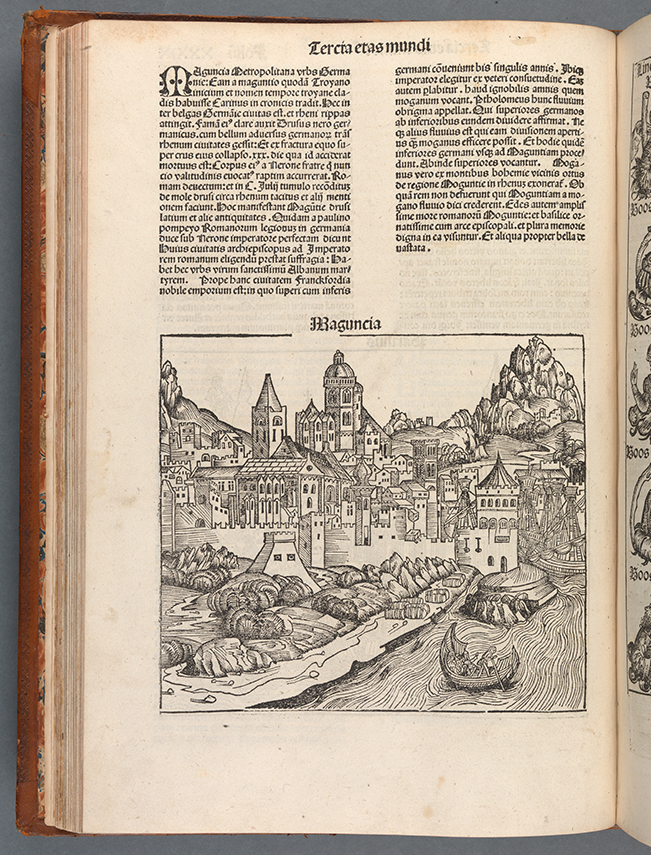Home / History / Social History / The History of the Book in the Early Modern Period: 1450 to 1800 / A fifteenth-century best-seller: the Nuremberg Chronicle
This article is from the free online
The History of the Book in the Early Modern Period: 1450 to 1800


Reach your personal and professional goals
Unlock access to hundreds of expert online courses and degrees from top universities and educators to gain accredited qualifications and professional CV-building certificates.
Join over 18 million learners to launch, switch or build upon your career, all at your own pace, across a wide range of topic areas.

 Fig 1. The descendants of Noah in Hartmann Schedel, Liber Chronicarum (Nuremberg, 1493), Folios XIV verso and XV recto double-spread. © The Board of Trinity College Dublin.
Fig 1. The descendants of Noah in Hartmann Schedel, Liber Chronicarum (Nuremberg, 1493), Folios XIV verso and XV recto double-spread. © The Board of Trinity College Dublin.
 Fig 2. View of the city of Nuremberg in Hartmann Schedel, Liber Chronicarum (Nuremberg, 1493), Folios XCIX verso and C recto double-spread. © The Board of Trinity College Dublin.
Fig 2. View of the city of Nuremberg in Hartmann Schedel, Liber Chronicarum (Nuremberg, 1493), Folios XCIX verso and C recto double-spread. © The Board of Trinity College Dublin.
 Fig 3. View of the city of Mainz in Hartmann Schedel, Liber Chronicarum (Nuremberg, 1493), Folio XXXIX verso. © The Board of Trinity College Dublin.
Fig 3. View of the city of Mainz in Hartmann Schedel, Liber Chronicarum (Nuremberg, 1493), Folio XXXIX verso. © The Board of Trinity College Dublin.
 Fig 4. Folio X recto in both Koberger’s 1493 edition (on the left)
Fig 4. Folio X recto in both Koberger’s 1493 edition (on the left) 





